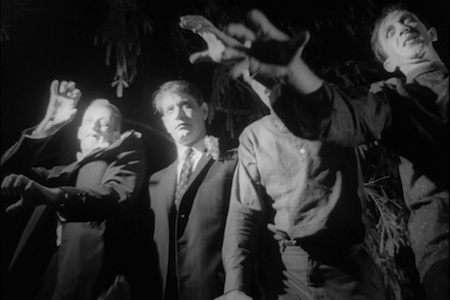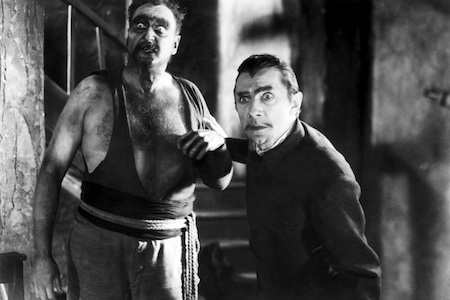We see them on TV. In blockbuster movies. Even in children’s movies. There’s no hiding from it. Zombies are bigger than ever. They’re now such a part of our pop culture that we forget what it was like when the zombie movie was more than just having scary fun with dead people. In a way, a zombie movie like Paranorman brings us back to a time of innocence, back when horror movies catered to kids as Saturday matinee fodder: cheap, schlocky ways to pass the time. It was in these matinee shows, around Christmastime of 1968, that George Romero’s Night of the Living Dead first appeared. And things were never the same. Roger Ebert reported the experience of watching the film on its first release, in a theater full of children on a Saturday afternoon: “The kids in the audience were stunned. The movie had stopped being delightfully scary…They’d seen some horror movies before, sure, but this was something else. This was ghouls eating people up—and you could actually see what they were eating. This was little girls killing their mothers. This was being set on fire. Worst of all, even the hero got killed.”
Video: Return of the Classic Zombie Movie
There may never be a zombie movie that will match the impact of Night of the Living Dead, because it was so far ahead of its time. It still sets the standard for low budget horror filmmaking, where minimal elements enhance the feeling of terror. The tight closeups and handheld camerawork give a documentary realism to this single interior setting, transforming a country house into a claustrophobic urgency. All of this adds immediacy to this nightmare vision of society—citizens bickering with each other in the face of apocalypse; an ineffective government at odds with its own people; a middle class family devoured; a black leader desperately trying to save the day. This is a horror movie that hits home— perhaps now more than ever.
There’s no question that Night of the Living Dead casts a deep shadow over horror filmmaking, but there are even earlier zombie movies that have something today’s movies don’t. Take White Zombie, generally considered to be the first zombie movie, and the namesake of Rob Zombie’s old band. It provides the template for many movie zombie characteristics: the slow walk, the blank-eyed stare, the resistance to bullets to the body. But there are other qualities to White Zombie that are totally lost on today’s action-oriented horror movies. Like the zombie curse that leaves one character rotting away in an unsettling silence. There’s Bela Lugosi’s eyes, which no special effects can match for their indescribable power, something inhuman and more than human. There’s the majestic final act, 10 minutes where hardly a word is spoken, only images passing in a trance-like lyricism. At its best, this film embodies the eerie poetry of a slow, dreamlike death. Compared to today’s zombies, this hypnotic vision of a world trapped between life and death is more disturbing and more beautiful.





